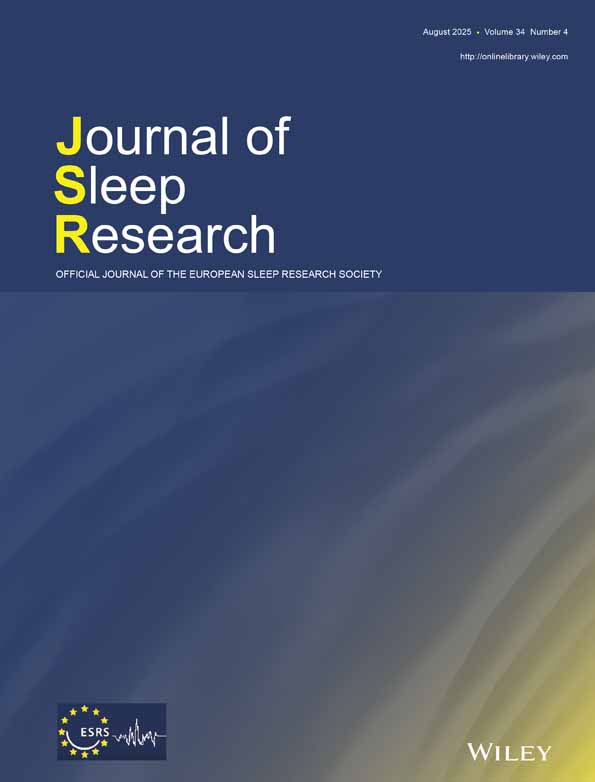Inducing jet-lag in older people: Directional asymmetry
Abstract
Twenty healthy elderly subjects (12 female, 8 male; mean age 81 years, range 67–87 years) each experienced a 15-day time isolation protocol in which they lived individually in a special laboratory apartment in which sleep and circadian rhythm measures could be taken. There were two experiments: one (6 females, 4 males) involved a 6-h phase advance of the sleep/wake cycle, and the other (6 females, 4 males) a 6-h phase delay. Each started with 5 baseline days, immediately followed by the phase shift. The subject was then held to the phase shifted routine for the remainder of the study. Rectal temperatures were recorded minute-by-minute throughout the entire experiment and each night of sleep was recorded using polysomnography. A directional asymmetry in phase-shift effects was apparent, with significantly more sleep disruption and circadian rhythm amplitude disruption after the phase advance than after the phase delay. Sleep disruption was reflected in reduced time spent asleep, and in changed REM latency, which increased in the phase advance direction but decreased in the phase delay direction. Although the phase advance led to a significant increase in wakefulness in the first half of the night, the phase delay did not lead to an equivalent increase in wakefulness during the second half of the night. Examination of both raw and ‘demasked’ circadian rectal temperature rhythms confirmed that phase adjustment was slow in both directions, but was less slow (and more monotonic) after the phase delay than after the phase advance. Subjective alertness suffered more disruption after the phase advance than after the phase delay.




